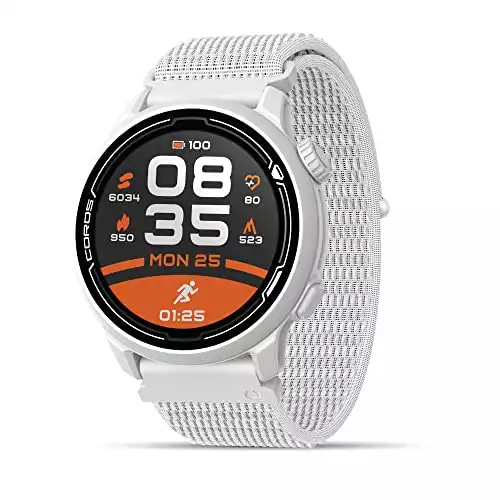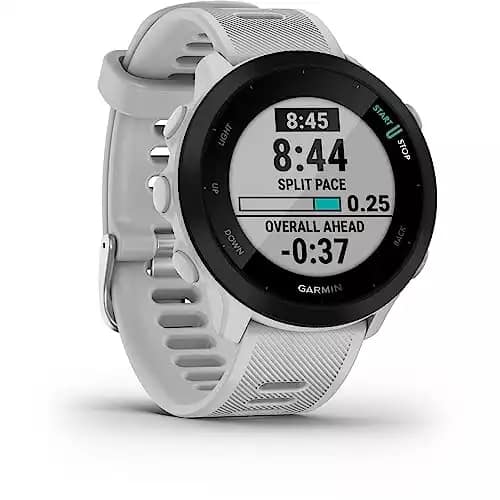If you’re a runner, you know that recovery is just as important as the workout itself. One way to aid in your recovery process is by incorporating recovery runs into your routine. Recovery runs are shorter, slower-paced runs that are usually done a day or two after a hard running workout or long run. These runs help to remove waste and reduce inflammation in your muscles, allowing them to recover faster.
Running has become increasingly popular over the years, with events like the 2023 NYC marathon this November drawing in thousands of participants each year. While running can be a great way to stay in shape, it can also take a toll on your body. That’s why it’s important to take recovery seriously and give your body the time it needs to heal. Recovery runs are a great way to do just that, and they can also help improve your overall running performance.
Not only do recovery runs aid in physical recovery, but they can also have a positive impact on your mental health. Running has been shown to reduce stress and anxiety, and recovery runs can be a great way to incorporate some easy, stress-free movement into your routine. In this article, we’ll explore the benefits of recovery runs in more detail and provide tips on how to incorporate them into your training plan.
Understanding Recovery Runs
When it comes to running, it’s not just about pushing yourself to the limit every time you hit the pavement. Recovery is just as important as the workout itself. That’s where recovery runs come in.
A recovery run is a shorter, slower-paced run that is usually done a day or two after a hard running workout or long run. The purpose of a recovery run is to assist in the recovery process by encouraging blood flow to help clear lactic acid and other waste products from your legs. Recovery runs are usually done at a pace 60 to 90 seconds slower than your average run.
It’s important to note that recovery runs are largely unnecessary during base training when most of your workouts are moderate in both intensity and duration. When you begin doing formal high-intensity workouts and exhaustive long runs, it’s time to begin doing recovery runs in roughly a 1:1 ratio with these key workouts.
The Importance of Recovery Runs
As a runner, you know that training is a crucial aspect of improving your endurance, fitness, and performance. However, it’s equally important to allow your body to recover and heal from the stress of your workouts. That’s where recovery runs come in.
Recovery runs are low-intensity runs that you do after a hard workout or a race. They help to get your blood flowing, loosen tight muscles, and break up lactic acid that may have accumulated during your previous run. Recovery runs should be done 60-90 seconds slower than your average mileage time, according to Brooks Running.
Here are some of the benefits of recovery runs:
- Prevent soreness: Recovery runs can help prevent stiffness and soreness from happening after a long run or race, according to RunnerClick. It’s best to shake things out and loosen muscles up after that strenuous workout.
- Improve aerobic capacity: Recovery runs can add volume to your whole training week, which can also boost your aerobic capacity, helping you run faster, according to Women’s Running. The better the base, the more capacity you have to run harder and faster.
- Raise fitness level: Recovery runs can raise your fitness level by pushing you to work through your lingering fatigue and helping you break through your exercise walls, which athletes hit once their glycogen stores have been depleted, according to MasterClass.
- Increase blood circulation: Recovery runs increase your blood circulation, which can help your muscles recover faster and reduce the risk of injury, according to Motiv Sports.
Opportunity to participate in local races
Opportunity to participate in local races, such as the upcoming NYC Road Runners Race Calendar (link to relevant URL) and NYCRUNS events (link to relevant URL) to add variety and excitement to your training and to challenge yourself, connect with other runners, and gain experience in a race environment.
Physiological Benefits of Recovery Runs
Recovery runs are an essential part of any training program. They are low-intensity runs that help your body recover from previous workouts and prepare for future ones. Here are some of the physiological benefits of recovery runs:
Improved Muscle Recovery and Reduced Soreness
Recovery runs help to flush out lactic acid and other waste products that accumulate in your muscles during high-intensity workouts. This flushing process helps to reduce muscle soreness and fatigue, allowing you to recover more quickly and get back to training sooner.
Increased Blood Flow and Circulation
Recovery runs help to increase blood flow and circulation throughout your body. This increased blood flow delivers oxygen and nutrients to your muscles, helping them to recover and grow stronger. It also helps to remove waste products from your muscles, reducing the risk of injury and improving overall performance.
Improved Cardiovascular Endurance
Recovery runs help to improve your cardiovascular endurance by increasing your heart rate and breathing rate. This increased cardiovascular activity strengthens your heart and lungs, making them more efficient at delivering oxygen to your muscles during high-intensity workouts.
Enhanced Mental Clarity and Focus
Recovery runs can also provide mental benefits. They help to clear your mind, reduce stress, and improve your focus and concentration. This mental clarity can help you to perform better during high-intensity workouts and improve your overall performance.
Reduced Risk of Injury
Recovery runs help to reduce the risk of injury by allowing your muscles and joints to recover and repair. They also help to improve your flexibility and range of motion, reducing the risk of strains and other injuries.
Pace and Intensity of Recovery Runs
When it comes to recovery runs, the pace and intensity are crucial to ensure that you’re getting the most out of your workout without overexerting yourself. Recovery runs are meant to be done at a slow and steady pace, which is typically around 60 to 90 seconds slower than your average training pace. This allows your body to recover from the previous workout while still getting the benefits of an active recovery.
One way to determine your pace for a recovery run is to use the “talk test.” This means that you should be able to hold a conversation while running without feeling out of breath. If you’re struggling to speak, then you’re likely running too fast, and you should slow down. On the other hand, if you’re able to sing a song, then you’re probably not pushing yourself enough.
Another way to gauge your pace is through your heart rate. Your maximum heart rate is the highest number of beats per minute that your heart can sustain during exercise. During a recovery run, you should aim to keep your heart rate in the lower end of your aerobic training zone, which is typically between 60% to 70% of your maximum heart rate. This will help you stay in a comfortable heart rate zone while still getting the benefits of an active recovery.
When it comes to intensity, recovery runs should be done at a low intensity. This means that you should not be pushing yourself to the limit or trying to set a new personal record. Instead, focus on maintaining a steady pace and keeping your heart rate in the right zone. You can use a heart rate monitor to ensure that you’re staying within your target heart rate zone.
| Key Takeaways |
|---|
| Recovery runs should be done at a slow and steady pace, typically 60 to 90 seconds slower than your average training pace. |
| Use the “talk test” to determine if you’re running at the right pace. You should be able to hold a conversation without feeling out of breath. |
| Aim to keep your heart rate in the lower end of your aerobic training zone, which is typically between 60% to 70% of your maximum heart rate. |
| Recovery runs should be done at a low intensity, so focus on maintaining a steady pace and keeping your heart rate in the right zone. |
Why Every Runner Needs a Running Watch: Benefits and Features
Heart rate zones are an effective tool for monitoring the intensity of recovery runs. Staying within zones 1 and 2 (60% to 70% of maximum heart rate) can help maintain a leisurely pace and aid in recovery from previous workouts. Monitoring heart rate during recovery runs can also help determine whether intensity needs to be adjusted. Slowing down may be necessary to avoid overexertion if heart rate is too high. Overall, using heart rate zones can optimize recovery runs and prevent unnecessary strain on the body.
Features to Look for in a Running Watch
When choosing a running watch, there are several features to consider:
- Accurate tracking of distance, pace, and time: A good running watch should be able to track your distance, pace, and time accurately. This information is essential for monitoring your progress and setting goals.
- Heart rate monitor: Some running watches come with a built-in heart rate monitor, which can be a valuable tool for monitoring your health and fitness. By tracking your heart rate during exercise, you can ensure that you’re working at the right intensity level.
- Power output: Some advanced running watches can measure your power output, which is a measure of the work you’re doing while running. This information can be useful for monitoring your progress and setting goals.
- Training pace and heart rate zone: A good running watch should be able to help you determine your training pace and heart rate zone. This information is essential for ensuring that you’re working at the right intensity level and avoiding injury.
Benefits of Using a Running Watch
Using a running watch can offer several benefits for runners, including:
- Improved training efficiency and effectiveness: By tracking your progress and monitoring your health metrics, you can ensure that your training is as efficient and effective as possible.
- Enhanced motivation and accountability: Setting goals and tracking your progress can help keep you motivated and accountable.
- Tracking progress and setting goals: By tracking your progress over time, you can set realistic goals and monitor your progress towards achieving them.
|
3.5
|
3.5
|
3.5
|
3.5
|
3.5
|
|
$449.99
|
$459.00
|
|
|
|
Recovery Runs in Training Schedules
If you are training for a marathon, half marathon, or any long-distance race, incorporating recovery runs into your training program can be beneficial. Recovery runs are short, easy runs that are done at a slower pace than your usual runs. These runs can help your body recover from the high-intensity key runs such as tempo runs, long runs, or interval workouts.
When you do a recovery run, you are essentially forcing your body to exercise in a pre-fatigued state. This can help improve your endurance and build your aerobic base. Recovery runs also help remove waste from your muscles and reduce the risk of injury.
Adding recovery runs to your training schedule can be easy. Simply plan to do a short, easy run within 24 hours of a hard workout. Recovery runs should be shorter than your base sessions and performed at a pace 60 to 90 seconds slower than your average run.
Below is an example of a training schedule that incorporates recovery runs:
| Day | Workout |
|---|---|
| Monday | Rest or cross-training |
| Tuesday | Tempo run |
| Wednesday | Recovery run |
| Thursday | Interval workout |
| Friday | Recovery run |
| Saturday | Long run |
| Sunday | Rest or cross-training |
Recovery Runs and Injury Prevention
Recovery runs are a valuable tool for injury prevention. When you run, you put stress on your body, which can lead to soreness, pain, and injury. Recovery runs help you to loosen up and recover from the stress of hard workouts, reducing your risk of injury.
One of the primary benefits of recovery runs is that they are low-intensity. Running at a slower pace allows your body to recover while still getting some exercise. This can help you to avoid overtraining and burnout, which can lead to injury.
Another benefit of recovery runs is that they can help you to improve your running form and technique. When you run at a slower pace, you can focus on your form and make adjustments as needed. This can help you to avoid injuries caused by poor form, such as shin splints or plantar fasciitis.
Stretching is also an important part of injury prevention, and recovery runs can be a good time to incorporate stretching into your routine. After your run, take a few minutes to stretch your muscles and improve your flexibility. This can help to reduce muscle soreness and stiffness, which can lead to injury.
If you have tired legs from a hard workout or race, a recovery run can be just what you need to get back on track. Running at a slower pace can help to increase blood flow to your muscles, which can help to reduce soreness and speed up recovery.
Helpful Tools to Help You Recover from Your Runs
|
3.5
|
3.5
|
3.5
|
3.5
|
3.5
|
|
$109.99
|
|
$23.96
|
|
N/A
|
Listening to Your Body During Recovery Runs
During recovery runs, it’s important to listen to your body. Your body is the best indicator of how much rest and recovery you need. If you’re feeling tired, sore, or fatigued, it’s important to take it easy and not push yourself too hard.
One way to listen to your body during recovery runs is to focus on running at an easy pace. An easy run should feel comfortable and not too challenging. You should be able to hold a conversation while running. This type of run is also known as an active recovery run.
Shorter duration recovery runs can also be helpful. If you’re feeling tired or have sore muscles, a shorter run can help you recover without putting too much stress on your body. These runs can be as short as 10-15 minutes, but they can still be effective in helping you recover.
Another way to listen to your body during recovery runs is to run at a slower speed. Recovery runs should be done at a pace that is 60-90 seconds slower than your average mileage time. This slower pace allows your body to recover without putting too much stress on your tired legs.
It’s important to remember that recovery runs are not meant to be challenging or difficult. They are meant to help you recover and prepare for your next run. If you’re feeling tired or sore, it’s important to take it easy and not push yourself too hard.
| Tips for Listening to Your Body During Recovery Runs |
|---|
| Run at an easy pace |
| Keep the duration shorter |
| Run at a slower speed |
| Don’t push yourself too hard |
| Rest and recover as needed |
What’s the Deal with Treadmill Running vs Outdoor Running?
Using a treadmill for recovery runs can be a good way to listen to your body more because it allows you to control the pace and incline of your run, which can help you stay within your desired heart rate zone and avoid overexertion. Additionally, the consistent surface of the treadmill can reduce the risk of tripping or falling, allowing you to focus more on your body and how it feels during the run. You can also easily monitor your heart rate and adjust the pace or incline as needed to stay within your recovery zone. Overall, using a treadmill for recovery runs can help you tune in to your body’s signals and adjust your workout accordingly, leading to a more effective and safe recovery.
Recovery Runs and Enjoyment
When it comes to exercise, enjoyment is key to sticking with it in the long run. Recovery runs can be a great way to add some fun into your training regimen. Unlike hardcore runners who may only focus on speed and distance, recovery runs are meant to be enjoyable and relaxed.
During a recovery run, you can take the time to enjoy your surroundings and focus on your form. Without the pressure of hitting a certain pace or distance, you can take in the scenery around you and appreciate the beauty of nature. This can be especially beneficial for those who live in urban areas and don’t get to experience nature often.
Moreover, recovery runs can be a great way to feel a sense of pride in your progress. As you gradually increase your distance and pace, you can take pride in the fact that you’re improving and becoming a better runner. This sense of accomplishment can be a great motivator to keep going and stick with your training plan.
To make recovery runs even more enjoyable, consider running with a friend or a group. This can make the experience more social and help keep you accountable. You may even find that you look forward to your recovery runs as a way to catch up with friends and enjoy some fresh air.
Here’s a popular table that can help you plan your recovery runs:
| Day | Workout |
|---|---|
| Monday | Rest day |
| Tuesday | Interval training |
| Wednesday | Recovery run |
| Thursday | Tempo run |
| Friday | Rest day |
| Saturday | Long run |
| Sunday | Recovery run |
Remember, recovery runs should be enjoyable and relaxing. Don’t put too much pressure on yourself to hit a certain pace or distance. Instead, focus on enjoying the experience and taking in the beauty of your surroundings.
Recovery Runs and Nutrition
When it comes to recovery runs, nutrition is just as important as the run itself. Proper nutrition can help you recover faster and get back to training sooner. Here are some tips on how to fuel your body for optimal recovery after a hard workout.
Food
What you eat after a recovery run is important for replenishing energy stores and repairing muscle tissue. Aim to eat a balanced meal that includes both carbohydrates and protein within 30 minutes of finishing your run. Carbohydrates replenish glycogen stores, while protein helps repair and rebuild muscle tissue.
Some good post-run meal options include:
- Grilled chicken with sweet potato and green beans
- Quinoa salad with roasted vegetables and chickpeas
- Whole wheat pasta with marinara sauce and turkey meatballs
In addition to meals, snacks can also be a great way to refuel after a recovery run. Some good snack options include:
- Greek yogurt with berries and granola
- Apple slices with almond butter
- Hummus with carrots and whole wheat pita bread
Related:
- 2024 Protein Powder Review: Finding Your Perfect Match
- Why Plant-Based Protein Powders are Superior to Whey
24-Hour Rule
In addition to eating the right foods, it’s important to follow the 24-hour rule after a recovery run. This means avoiding hard workouts for at least 24 hours after a recovery run to give your body time to recover.
During this time, focus on light activities such as stretching, foam rolling, or yoga. This will help improve circulation, reduce soreness, and promote relaxation, all of which are important for recovery.
Recovery Routine
Finally, having a recovery routine can help you optimize your recovery after a recovery run. This routine should include a combination of nutrition, rest, and active recovery methods.
Some key components of a recovery routine include:
- Proper hydration: Drink plenty of water before, during, and after your run to help flush out toxins and keep your body hydrated.
- Sleep: Aim to get at least 7-8 hours of sleep each night to help your body recover and repair.
- Stretching: Incorporate stretching exercises into your recovery routine to improve flexibility and reduce muscle soreness.
- Foam rolling: Use a foam roller to massage sore muscles and improve circulation.
- Ice baths: Taking an ice bath after a hard workout can help reduce inflammation and promote recovery.
By following these tips, you can help your body recover faster and get back to training sooner. Remember, recovery runs are just as important as your hard workouts, so make sure to give your body the fuel and rest it needs to perform at its best.
Yoga and Pilates Benefits for Post-Run Recovery
Yoga and Pilates are low-impact activities that offer a range of benefits, making them great additions to recovery days when running is not an option. They can increase flexibility, reduce muscle soreness, improve balance and stability, enhance relaxation and stress relief, and strengthen core muscles. Yoga increases lung capacity, while Pilates improves endurance, helps prevent injury, and promotes overall physical and mental well-being.
Benefits of Yoga and Pilates After Running
| Benefit | Yoga | Pilates |
|---|---|---|
| Increases flexibility | ✓ | ✓ |
| Reduces muscle soreness | ✓ | ✓ |
| Improves balance and stability | ✓ | ✓ |
| Enhances relaxation and stress relief | ✓ | ✓ |
| Strengthens core muscles | ✓ | ✓ |
| Improves breathing and lung capacity | ✓ | ✓ |
| Increases endurance and stamina | ✓ | ✓ |
| Helps prevent injury | ✓ | ✓ |
| Promotes overall physical and mental well-being | ✓ | ✓ |
Type A Training of NYC offers virtual and in-person Yoga and Pilates classes tailored for runners in NYC. Their experienced coaches can help improve flexibility, reduce muscle soreness, and strengthen core muscles while promoting overall physical and mental well-being. Visit their website to learn more and get started.
Other Tips for Optimal Recovery
To optimize your recovery after a run, there are several other factors to consider beyond just recovery runs. Here are some additional tips to help you recover faster and perform better.
Adequate Sleep and Rest
Getting enough sleep and rest is crucial for recovery. Aim to get 7-9 hours of sleep per night, and make sure you’re taking rest days as needed. Overtraining can lead to injury and burnout, so it’s important to listen to your body and give it the rest it needs.
Related Post
Stretching and Foam Rolling
Stretching and foam rolling can help improve your flexibility, reduce muscle soreness, and prevent injury. Make sure you’re incorporating stretching and foam rolling into your post-run routine to help speed up your recovery. Consider taking a yoga or Pilates class to help improve your flexibility and mobility.
Related Post
Cross-training and active recovery
In addition to recovery runs, cross-training and active recovery can help speed up your recovery and improve your overall fitness. Consider incorporating activities such as swimming, cycling, or strength training into your routine to help build strength, improve your cardiovascular fitness, and prevent injury.
To summarize, recovery runs are just one piece of the puzzle when it comes to optimizing your recovery. By focusing on proper nutrition and hydration, getting enough sleep and rest, incorporating stretching and foam rolling into your routine, and incorporating cross-training and active recovery, you can help speed up your recovery and improve your overall performance.
Frequently Asked Questions
How many recovery runs should I do per week?
The number of recovery runs you should do per week depends on your training program and fitness level. Generally, it is recommended to schedule one or two recovery runs per week. However, if you are a beginner or recovering from an injury, you may need more recovery runs to help your body adapt to the training load.
What are the benefits of incorporating recovery runs into my training?
Incorporating recovery runs into your training can help reduce muscle soreness, improve blood flow, and promote faster recovery between workouts. Recovery runs also help maintain your aerobic fitness without adding extra stress to your body.
How can I calculate my recovery run pace?
To calculate your recovery run pace, you can use your easy run pace and slow it down by 1-2 minutes per mile or 30-45 seconds per kilometer. The idea is to run at a comfortable pace that allows you to maintain a conversation without getting out of breath.
What is the recommended pace for a recovery run in kilometers?
The recommended pace for a recovery run in kilometers is about 60-75% of your maximum heart rate or 1-2 minutes slower than your easy run pace. This pace should feel comfortable and help you recover without adding extra stress to your body.
When is the best time to schedule a recovery run?
The best time to schedule a recovery run is the day after a hard workout or long run. This allows your body to recover and adapt to the training load while still maintaining your aerobic fitness.
What is the difference between a recovery run and a long run or easy run?
A recovery run is a shorter run that is done at a slower pace than a long run or easy run. The goal of a recovery run is to help your body recover from a hard workout or long run without adding extra stress to your body. On the other hand, a long run is a longer run that is done at a slower pace to build endurance, while an easy run is a shorter run done at a comfortable pace to maintain aerobic fitness.






![Apple Watch Series 9 [GPS 41mm] Smartwatch](https://mlrsaszawtm3.i.optimole.com/cb:Wbt1.45aa0/w:auto/h:auto/q:mauto/ig:avif/f:best/https://www.typeatraining.com/wp-content/uploads/2023/10/31xWycYXNmL._SL500_.webp)




















